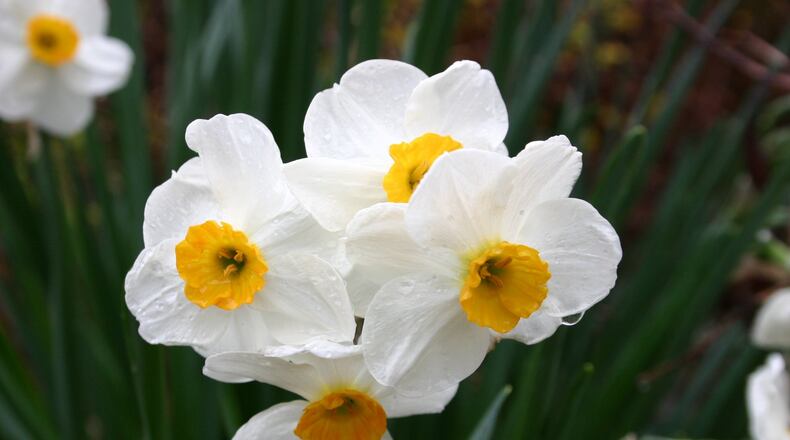Q: I had several clumps of daffodils that did not bloom this year. When I dug some of them to inspect, I found the bulbs very soft and mushy.Gerri Dunne, email
A: You were smart to dig them up to see what's going on. If the bulbs are soft, the soil around them is very likely too soggy. The interior of any bulb is delectable food to soil bacteria and fungi. The only way to keep these creatures at bay is for the soil to drain rapidly after a rain. When the daffodils' leaves have turned yellow, I think you need to dig out the entire bed six inches deep. Sift the soil to find your bulbs. Keep all of the firm bulbs and throw away any mushy ones. In a wheelbarrow, make a mixture of two parts original soil plus one part soil conditioner and one part very gritty sand. Fill the bed to a level three inches below the surrounding soil. Place the good bulbs, pointy end up, on the soil mixture and then complete filling the bed. This should make a nicely-drained spot for your bulbs to enjoy for years to come.
Q: My potatoes were eight inches high when the freeze came recently. The plants look melted. Will the potatoes below send up more shoots or should I replant?J. T. Moseley, email
A: The warm weather we had before the freeze kept soil temperatures pretty high. The potato tubers underground were probably not harmed by the cold. Snip off the damaged leaves and wait a couple of weeks. I'd be surprised if new green shoots do not appear.
Q: Every spring I find myself rushing out to put Christmas lights and blankets over my blueberry blooms to avoid them being damaged by a late winter freeze. What causes blueberries to bloom so early?Danielle Durgin, email
A: Blueberries are triggered to bloom based on the number of chill hours required by a particular plant during the winter. Different species or varieties of blueberries require different amounts of cold weather to bloom. Cold damage depends on the stage of development of a blueberry flower. During the winter, dormant flower buds of high-bush blueberries will survive temperatures as low as twenty below zero while rabbiteye blueberries are often damaged below zero. By the time individual flowers begin to protrude from the bud, temperatures below 20 degrees will damage the most exposed flowers. When flowers are fully open, temperatures below 26 will kill them. Summary? Blueberries that require lots of chill hours are less likely to be hurt by a late spring freeze. University of Georgia blueberry specialist Dr. Scott Nesmith says the Southern highbush ‘Camellia’ is pretty safe to plant, as are the new ‘Miss Jackie’, ‘Miss Lilly’ and ‘Miss Alice Mae’. Good rabbiteye varieties include ‘Baldwin’, ‘Alapaha’, ‘Ochlockonee’, and ‘Titan.’
About the Author
Keep Reading
The Latest
Featured


